
Table of Contents
- Starting with the smallest
- frequently asked Questions
Germany hosts a variety of small brown birds. However, these are not always easy to determine. Nevertheless, each of these birds has small but clear distinguishing features.
In a nutshell
- brown birds belonging to different families
- Coloration is not always the most obvious distinguishing feature
- partly completely brown, partly patterned in a different colour
- more or less loud chants
Starting with the smallest
wren (Troglodytes troglodytes)
It is one of the smallest birds in Europe, can be observed all year round and is the only representative of its family. Its outward appearance is rather inconspicuous, allowing it to be the perfect camouflage.
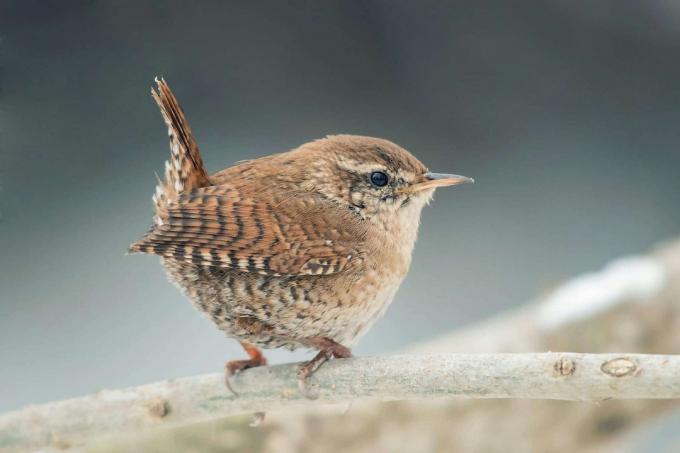
- about 9-10 cm tall
- Dark above, light brown below
- characteristic of the upturned tail
- Nest is closed, spherical clay or moss cavity
- Food: insects and spiders
Tip: This small brown bird has the loudest voice for its small body size.
chiffchaff (Phylloscopus collybita)
The chiffchaff is also rather inconspicuous in terms of color. But you can hear his singing almost everywhere where there are larger trees.

- 10-12 cm small, compact, short-winged
- Upper side consistently olive brown, whitish rings under the eyes
- spherical nests in ground vegetation
- walks tail wagging when looking for food
- Legs darker than in Fitis
Fitis (Phylloscopus trochilus)
This restless fellow of the warbler family can often be seen hopping around under less dense shrubbery in search of food. It is easily confused with the chiffchaff.

- only 11-12.5 cm small
- brown-green plumage, chest and belly light
- clear eye stripe, light beak and leg coloring
- light orange legs
- feeds on insects and spiders
Sedge Warbler (Acrocephalus schoenobaenus)
This very lively, almost cheeky and not very shy reed warbler can be observed on areas with dense reed and rush growth.
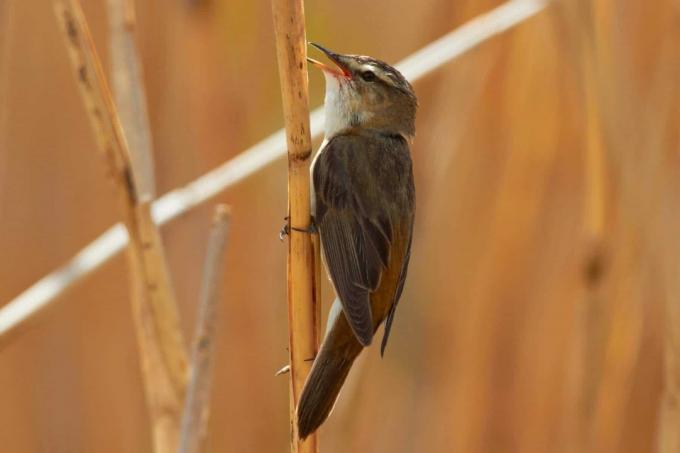
- about 11.5-13 cm small
- beige-brown basic coloration, dark stripes
- Yellowish underside, whitish throat
- Food: Insects, spiders, snails, aphids
Notice: All representatives of the reed warbler-like species have so far been assigned to the warbler-like species. For several years they have represented a separate family with 55 species.
Sand Martin (Riparia riparia)
Although their actual habitats are scarce, this little brown bird is not critically endangered. This is thanks to its ability to adapt to new habitats.

- smallest European swallow species, approx. 12cm long
- Dark brown to gray above, white below
- chest sides and chest band earth brown
- builds tubes in sandy steep walls
- feeds on small flying insects
treecreeper (Certhia brachydactyla)
The treecreeper from the treecreeper family can be recognized by its conspicuous mode of locomotion. It flies into a tree and then uses its tail feathers to hop up in a jerky motion.
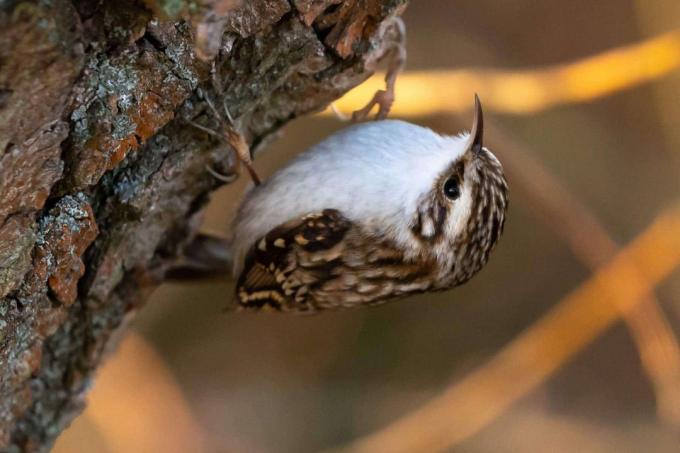
- about 12 cm small
- Upper side dark brown, dashed beige
- Beak thin, pointed, curved downwards
- observed in parks, gardens with fruit trees, deciduous forests
- Food: insects, beetles, spiders, larvae
field warbler (Locustella naevia)
This bird draws attention to itself with its loud singing during the breeding season. Otherwise he is a rather inconspicuous appearance.

- Body height 12-14 cm
- Striped olive brown on back
- Belly yellowish white, legs reddish brown
- lives in open landscapes, swamps, bogs, wet meadows
- Food: spiders, insects, mollusks
linnet (Linaria cannabina)
This little fellow is native to all of Germany and can be observed all year round. Especially in spring you can hear its loud singing in the open area with hedges, bushes and shrubs.

- Body height 12-14 cm
- Back of male chestnut brown, chest crimson
- Females grey-brown, beige below with dark stripes
- Diet: Seeds, grains and fruits
Notice: The linnet is one of the endangered species.
tree sparrow (Passer montanus)
The tree sparrow is related to the house sparrow but is slightly smaller. Since it is competitively inferior to the house sparrow, it is mainly found in open and semi-open landscapes in rural areas.

- Size from 12.5-14 cm
- Back plumage brownish, belly greyish
- white cheeks, dark cheek patch
- to be observed all year round
- feeds mainly on seeds, young animals also on animal food
Tip: Tree sparrows are very loyal animals and form lifelong partnerships.
reed warbler (Acrocephalus scirpaceus)
The reed warbler is tied to certain habitats, i.e. to dense reed biotopes and other reed beds. It hangs its finely woven nest on several reed stems.
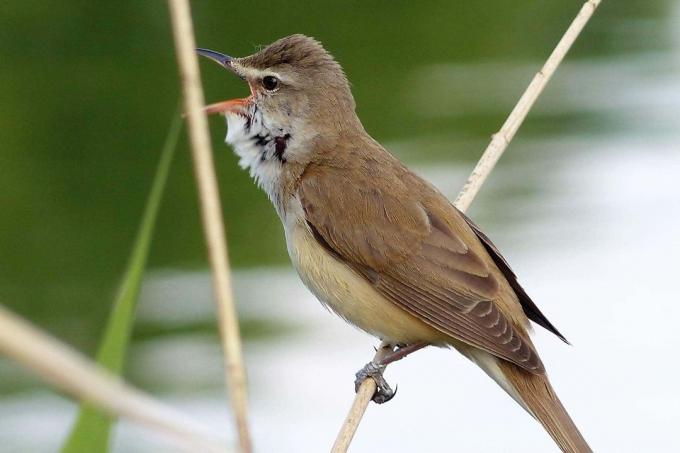
- about 13 cm tall
- females slightly larger
- Brown above, yellowish-white below, whitish throat
- seen from April to October
- feed on insects, spiders and snails
linnet (Linaria flavirostris)
This representative of the finches can only be found in Germany in winter and often travels in small groups. It can be found from October to April mainly in fields on the North Sea and Baltic Sea coasts, where it feeds on seeds and fruit.
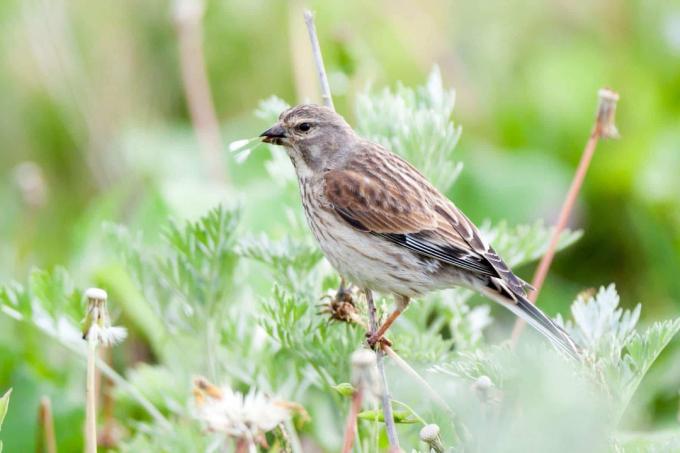
- 13-14 cm small, very active
- Plumage ocher brown, intensively dashed
- Underside light, chest and head heavily streaked
- Tail notched, slightly longer than linnet
- short bright yellow beak
garden warbler (Sylvia Borin)
That shy little brown one songbird is represented almost everywhere in Germany and can be discovered from the end of April to September. he falls and a. with its loud and varied singing.
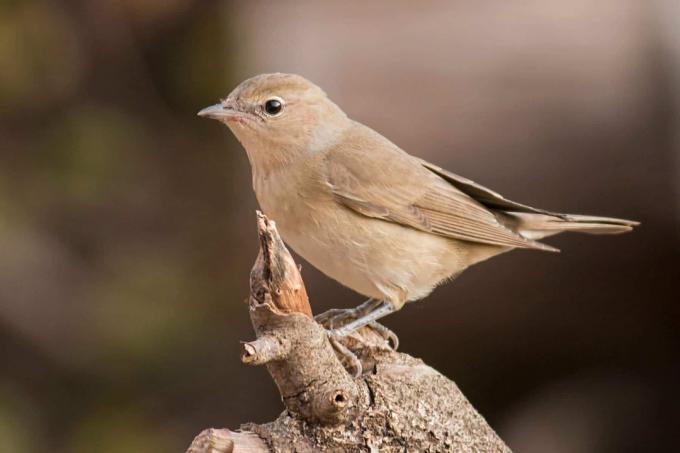
- Body height 13-14 cm
- Above olive-brown-grey, below white-brown
- in gardens, parks, semi-open cultural landscapes rich in bushes
- Food: Various insect species, berries and other fruits
dunnock (Prunella modularis)
This bird is about the size of a robin and can often be seen on the ground, in the undergrowth of forests, in bushes or hedges.

- Height of 13-14.5 cm
- brown-black dotted plumage
- head and chest grey
- to be observed all year round
- Food: mainly worms, beetles, ants and snails
Whitethroat (Sylvia communis)
she makes u a. drew attention to themselves with their raspy singing. This pretty little brown bird can be seen in areas with scattered bushes and shrubs from mid-April to September.
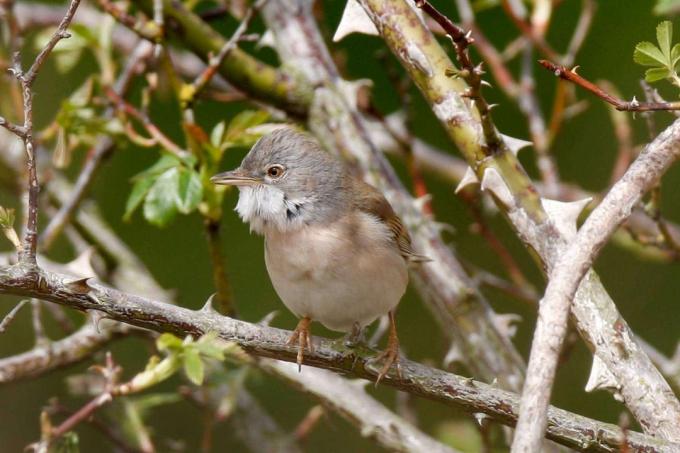
- reaches height of 13-15 cm
- both sexes rusty brown back, white throat
- Males gray head, pink breast, reddish iris
- The head of the female is brown
- Food: insects, spiders, in the fall, berries
house sparrow (Passer domesticus)
The bird, also popularly known as the sparrow, was once discredited as a parasite. You can discover it in almost all settlement areas where it occurs all year round.

- at 14-16 cm slightly larger than the tree sparrow
- in the male the throat is black, cheeks and crown grey
- Females grey-brown throughout
- Food: Main components are seeds and grains
Tip: The house sparrow is a very sociable bird and likes to breed together.
sprouts (Luscinia luscinia)
The appearance, habitat and voice of this small brown bird of the flycatcher family closely resembles the nightingale, to which it is also related.
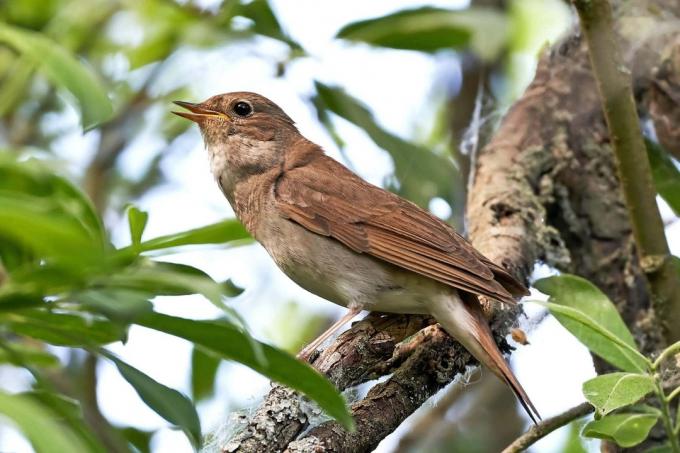
- 15-17 cm tall, grey-brown
- Breast mottled grey-brown, tail slightly reddish
- Nests in high ground vegetation
- observed from April to August
- Food: beetles, ants, isopods, centipedes
Tip: Sometimes there can be mixed broods between sprouts and nightingales.
skylark (Alauda arvensis)
In Germany, this typical field bird is now one of the endangered bird species. Its preferred habitats are areas with varied vegetation in open terrain, often not far from fallow land.

- Height 16-18cm
- Top and head different shades of brown, dashed
- Belly white and unpatterned, long wings
- strong beak, erectable hood in males
- Food: in summer, insects, in winter, seeds
frequently asked Questions
This can be done by hanging nest boxes and bird feeders, fruit bearing as well as native, with thorns and prickles, but also perennials and flower meadows in the garden integrated. Unlike meticulously manicured gardens, untidy ones attract numerous birds.
It can happen that the cuckoo, a so-called brood parasite, foists its egg on other host birds such as the warbler. This is then caringly raised by the warbler as if it were her own. Without host birds, the cuckoo would not have offspring.
In the meantime, year-round feeding is recommended, as this is intended to contribute to the preservation of biodiversity. The whole thing is justified by the fact that the natural habitats and food bases of the animals are severely endangered. However, you should definitely pay attention to the right food, especially during the feeding period from April to July.
